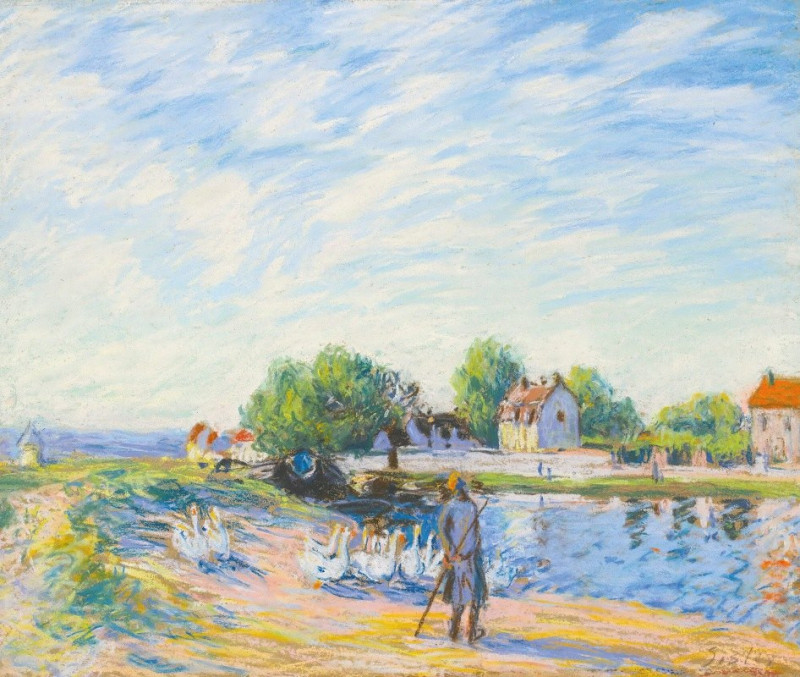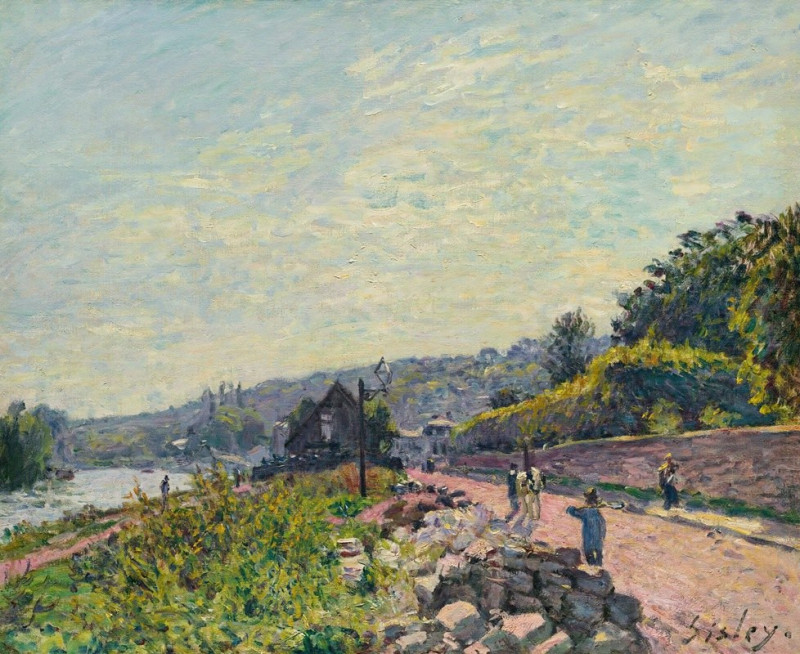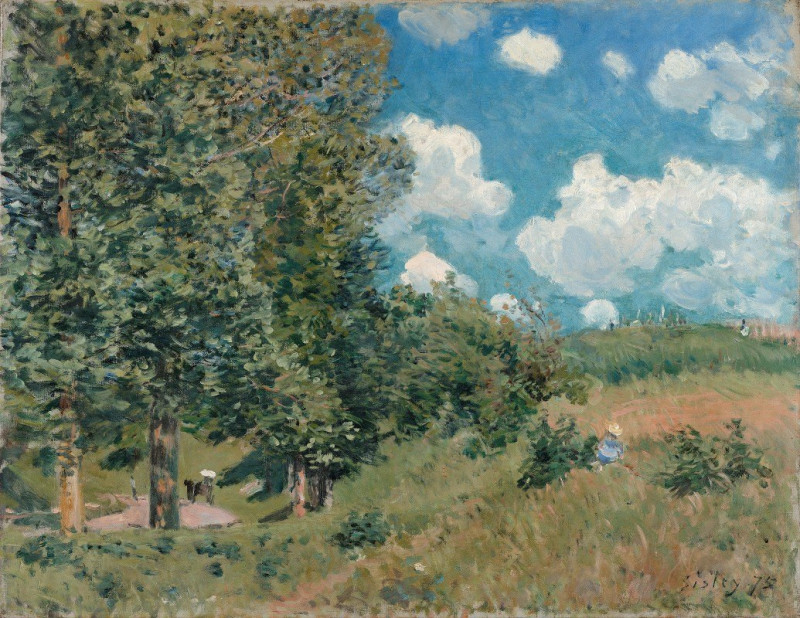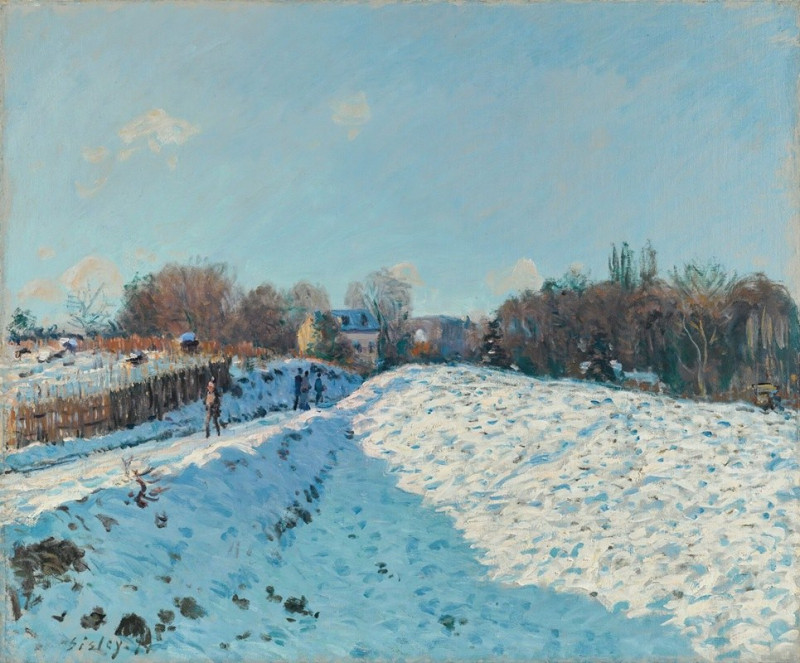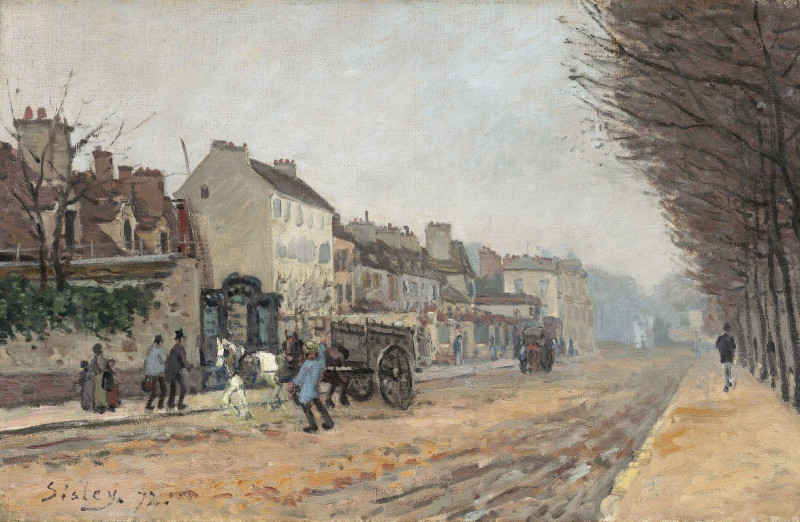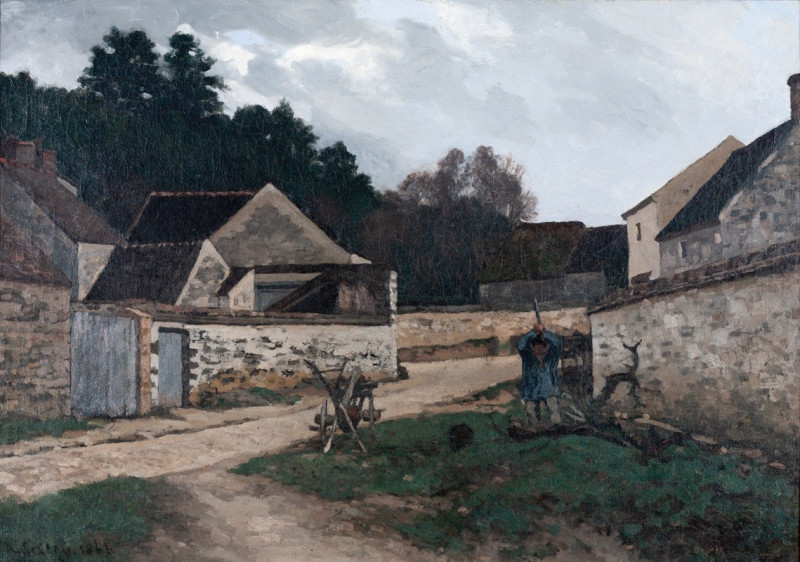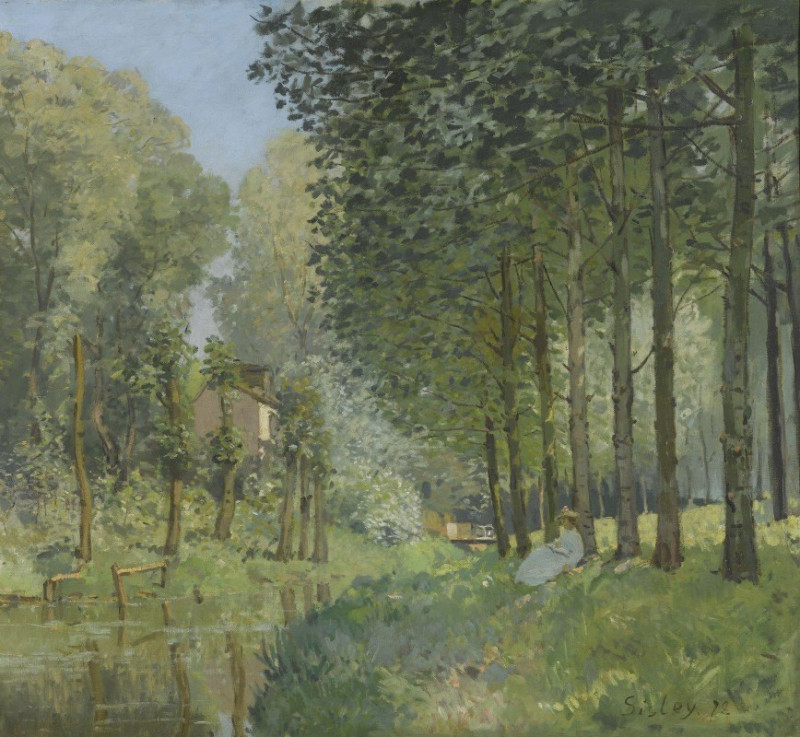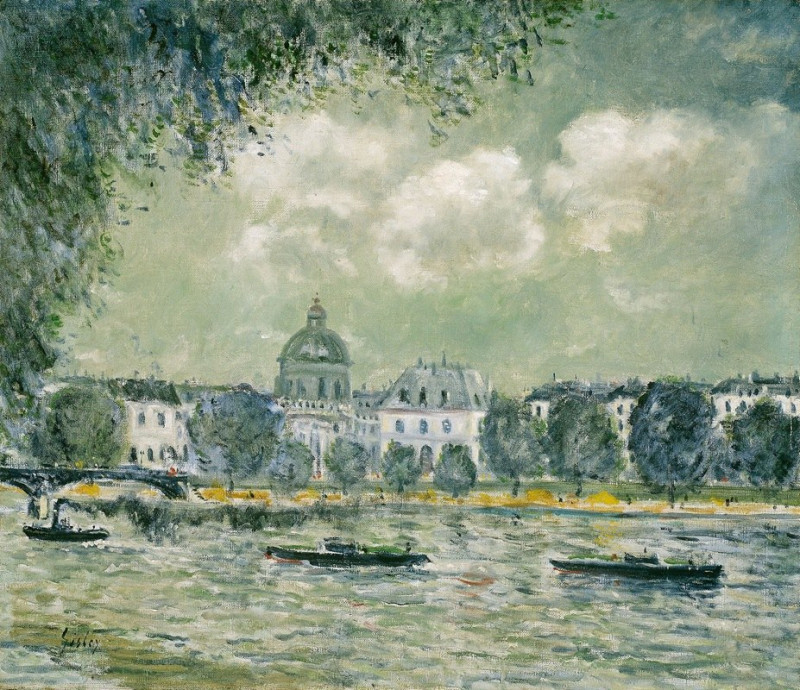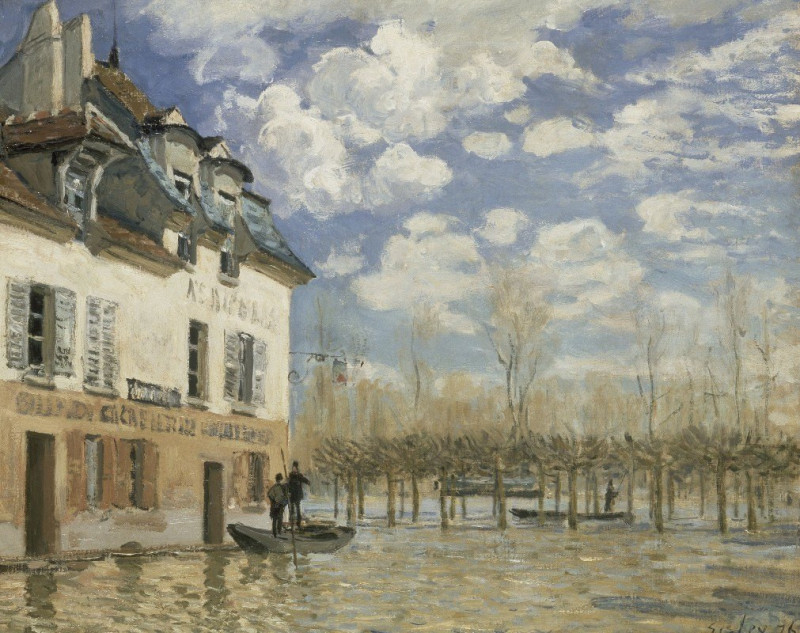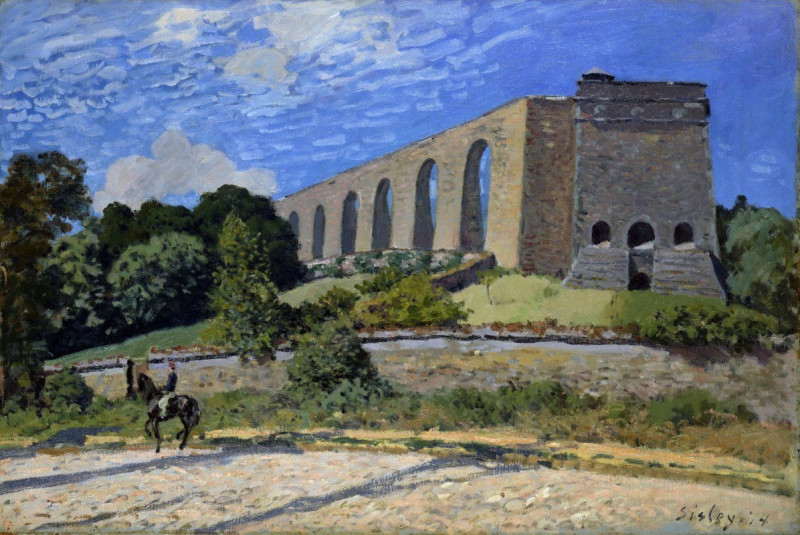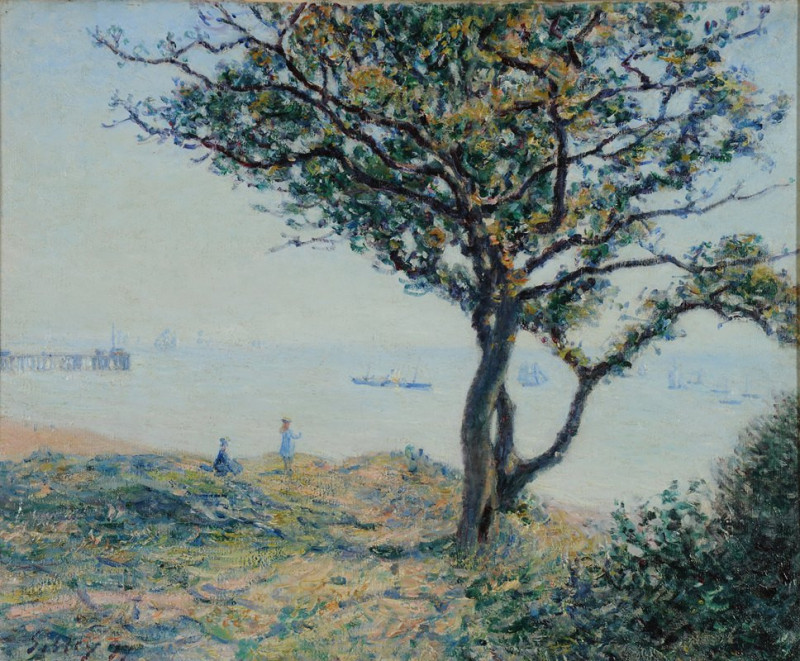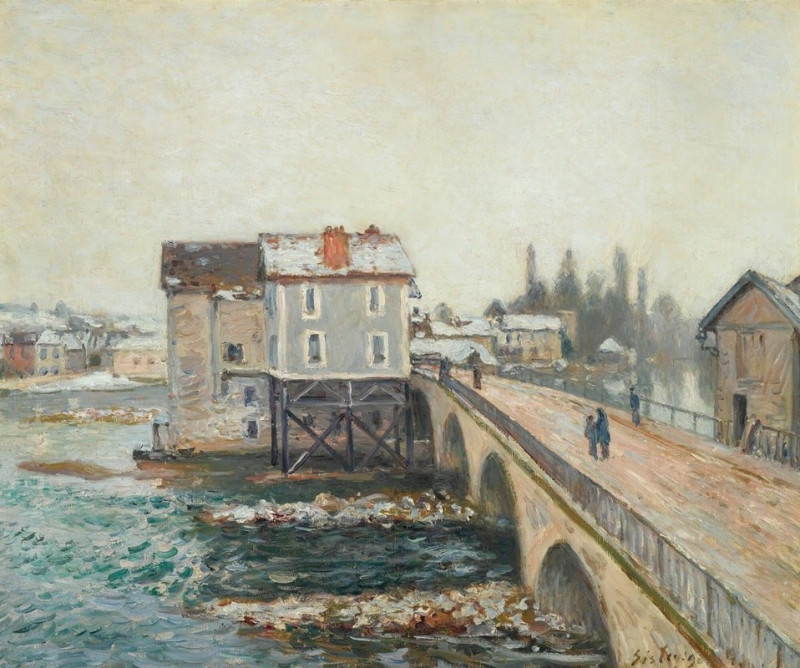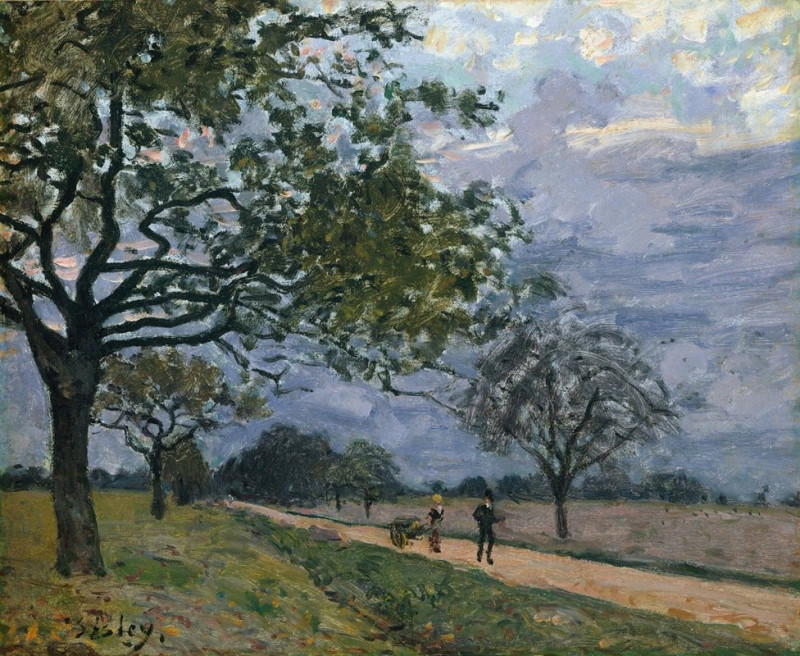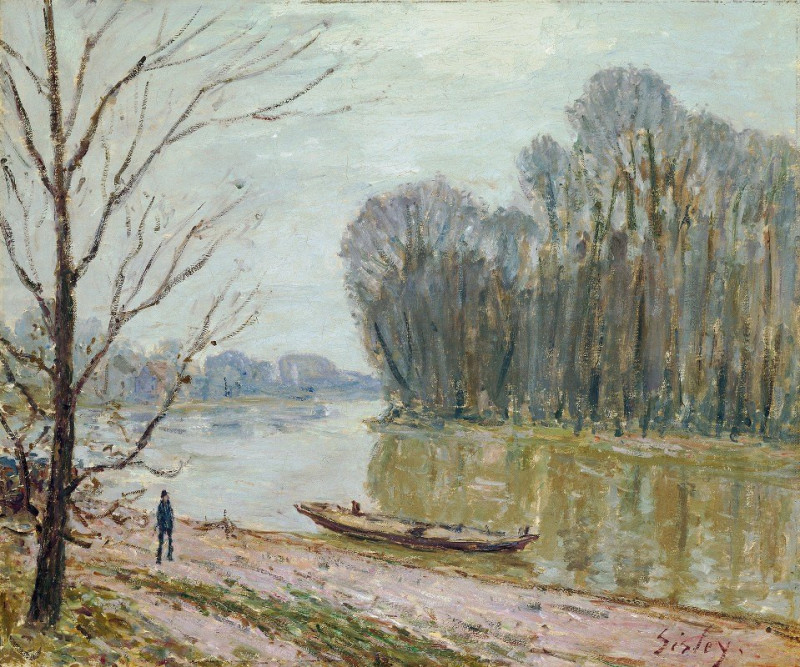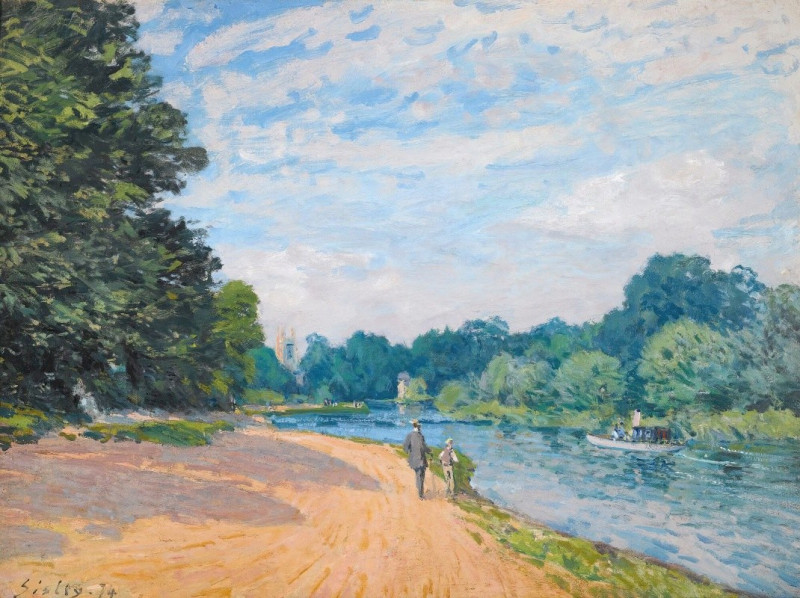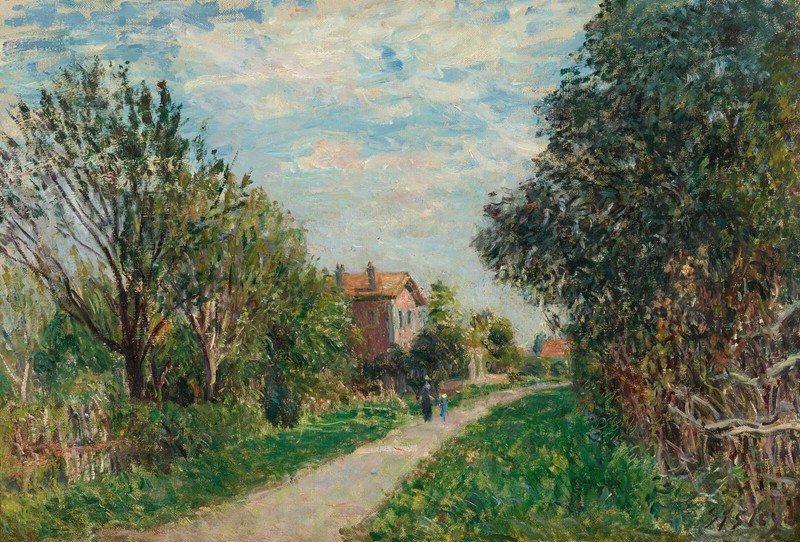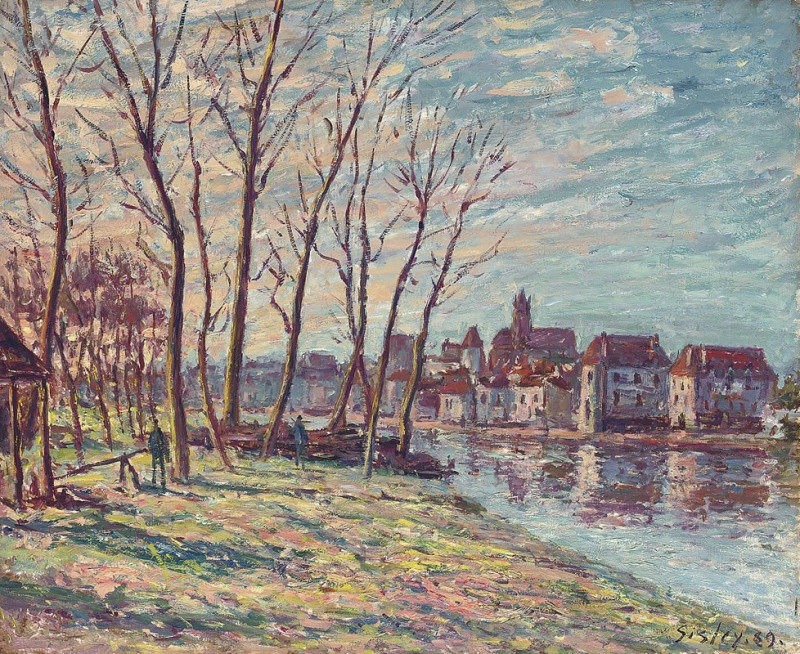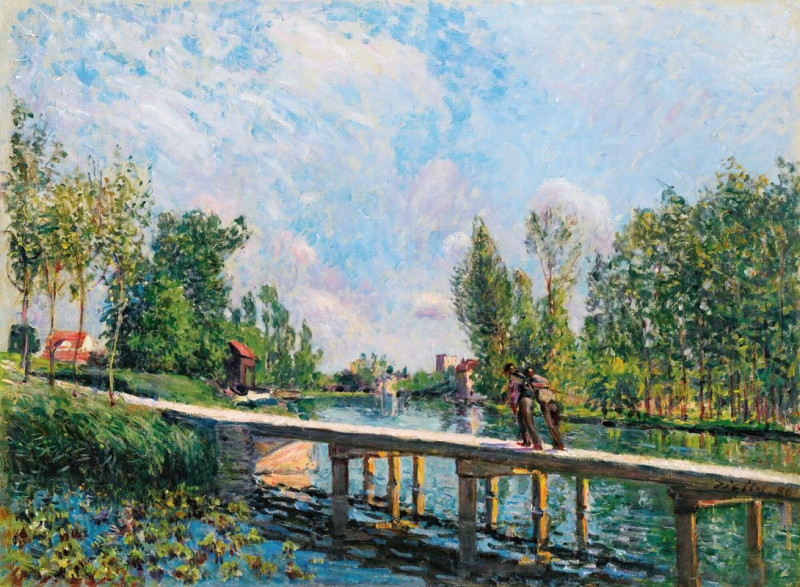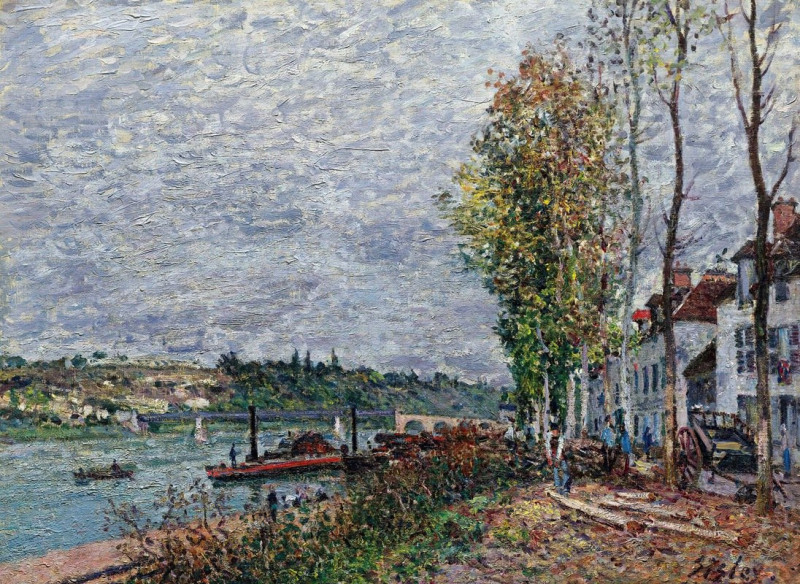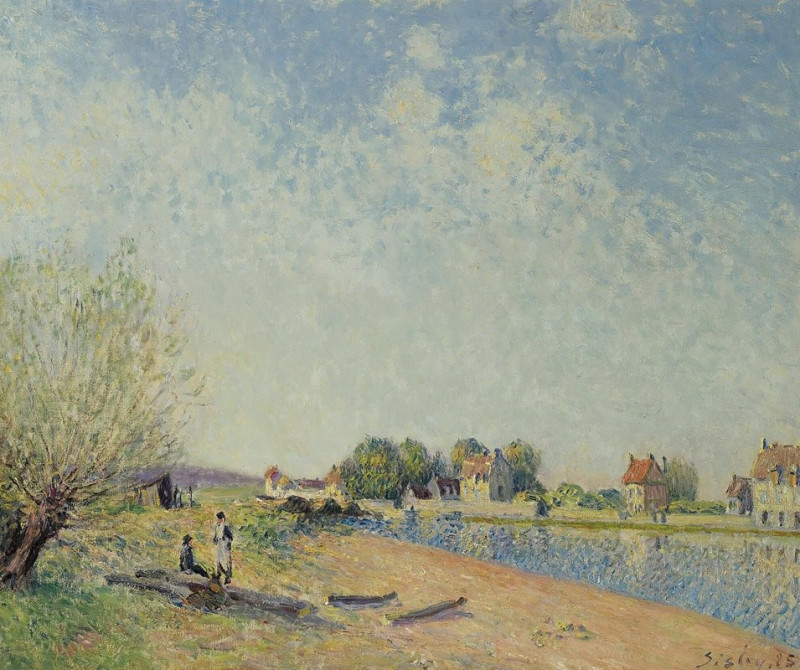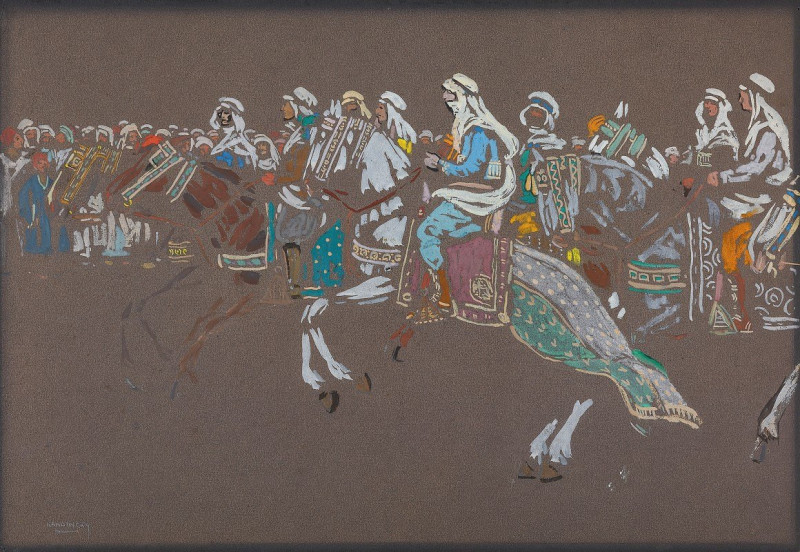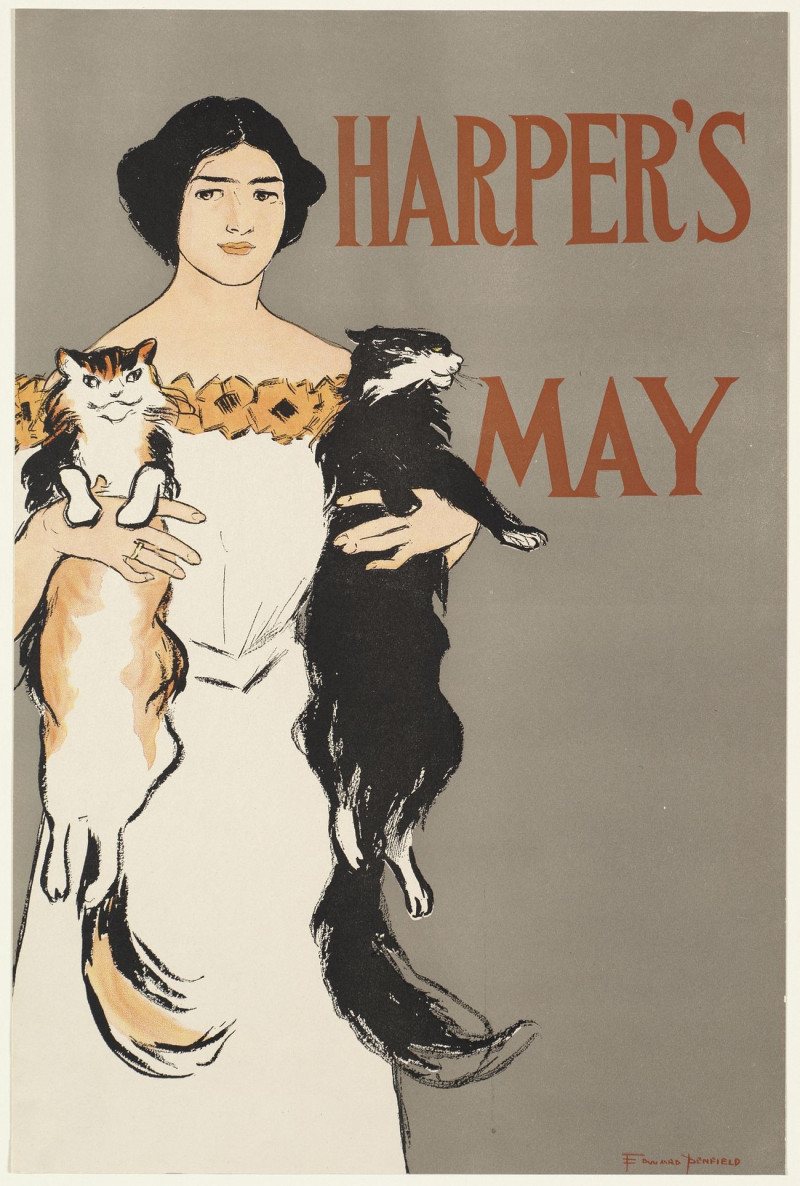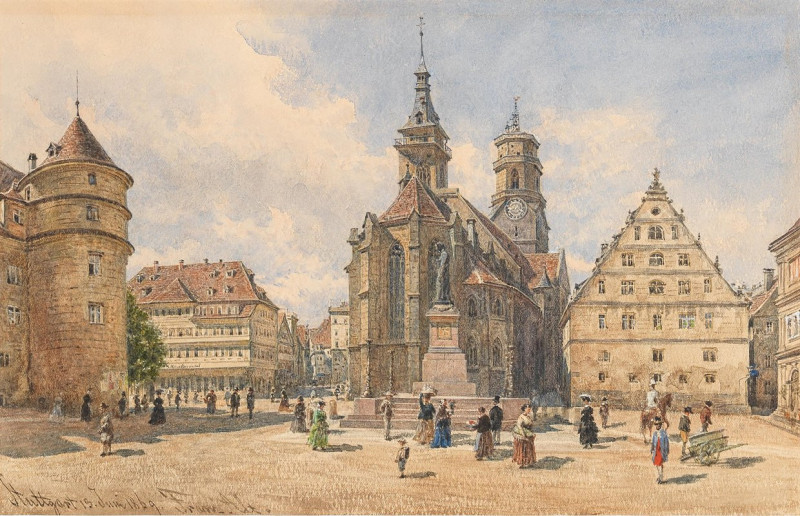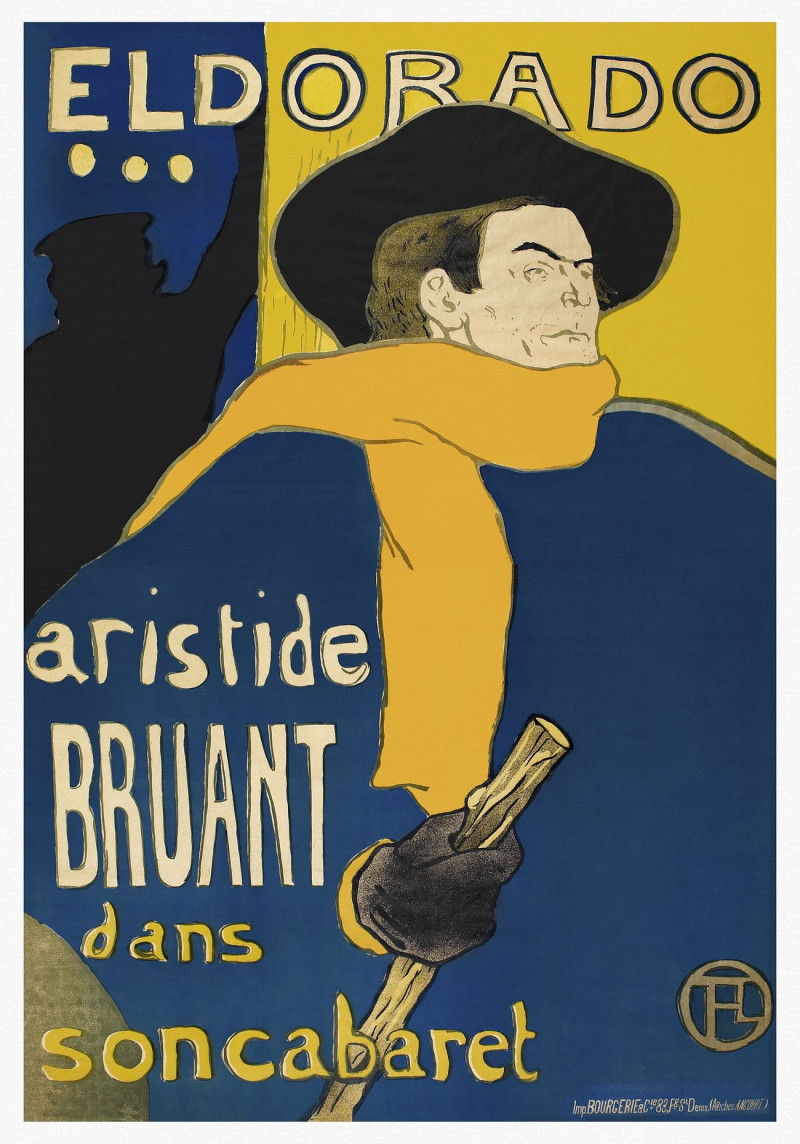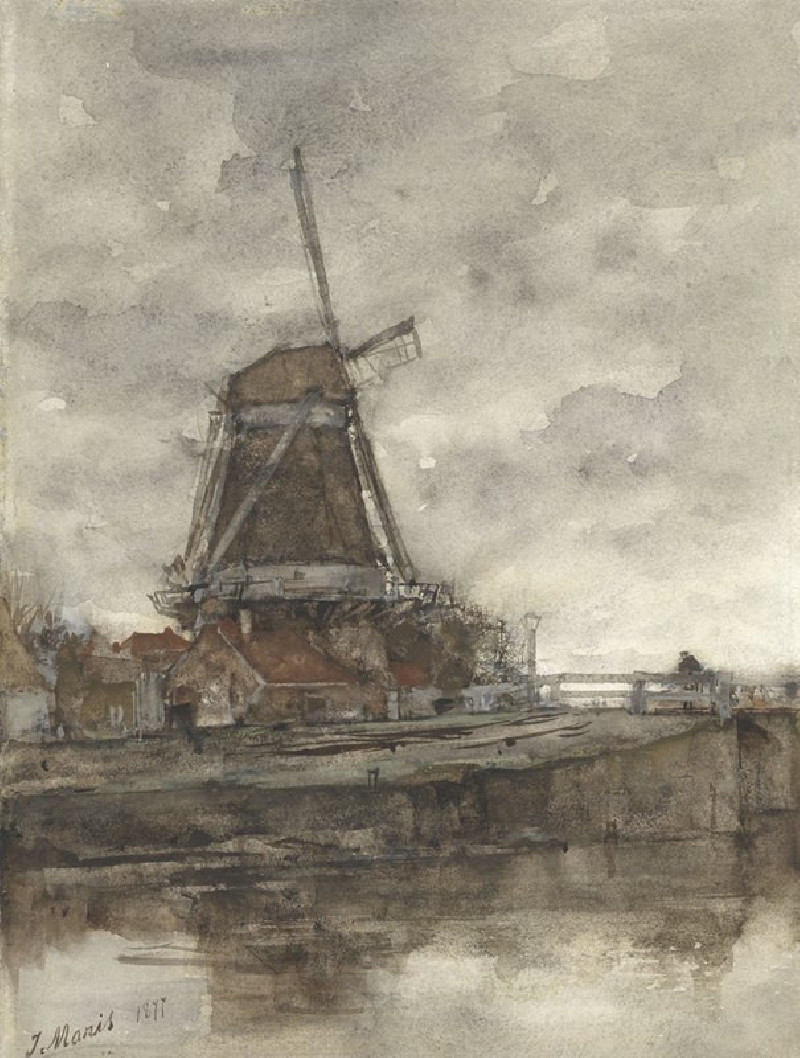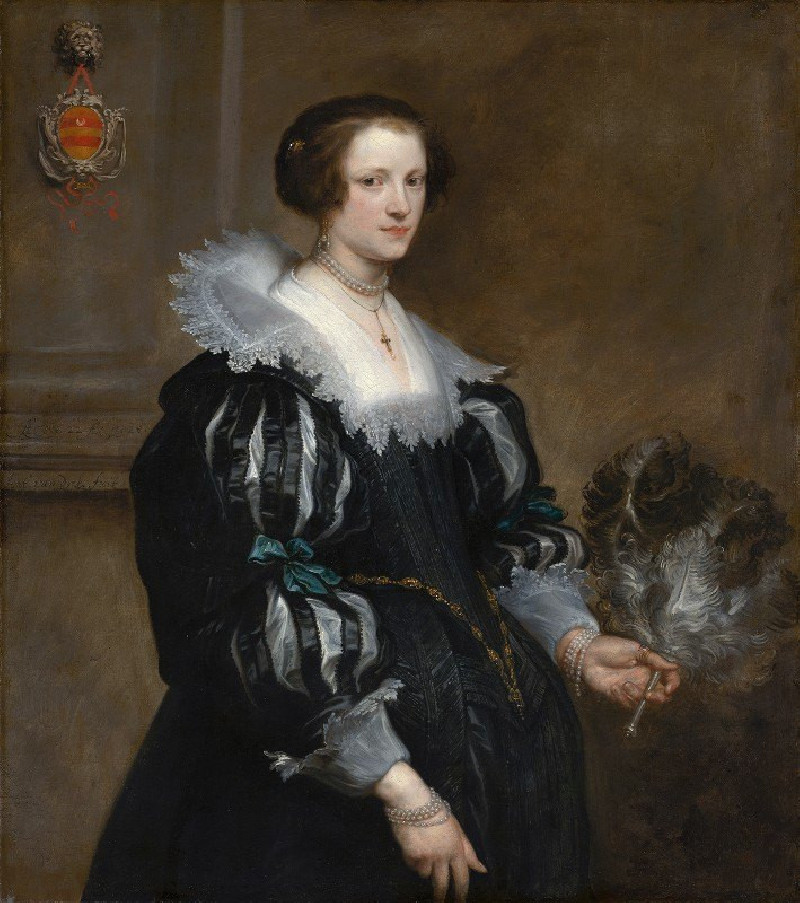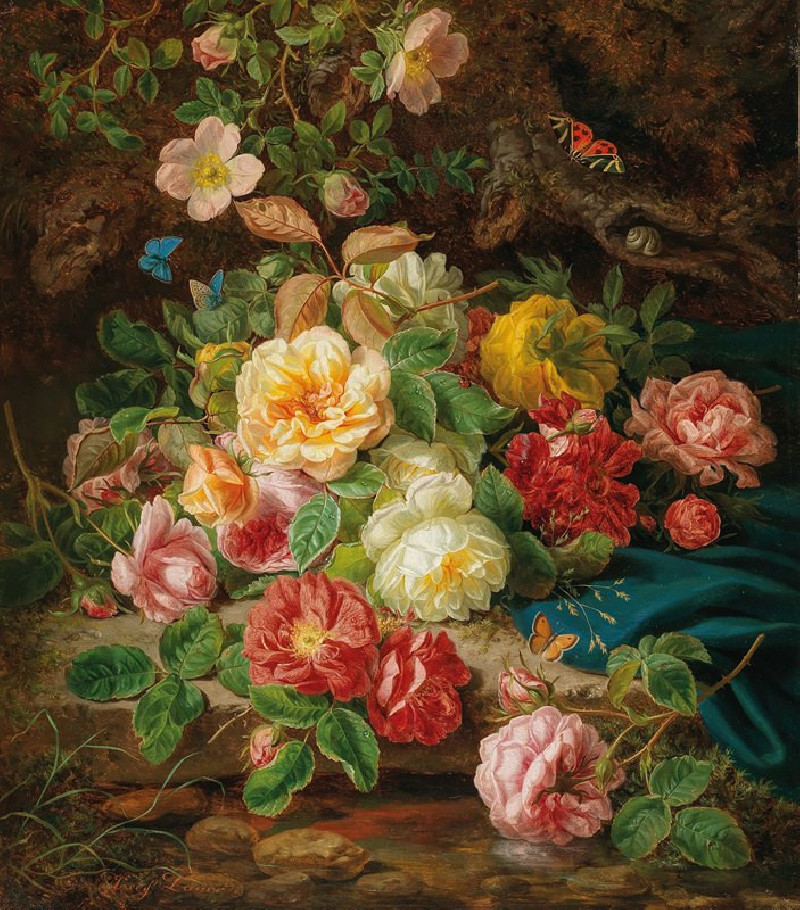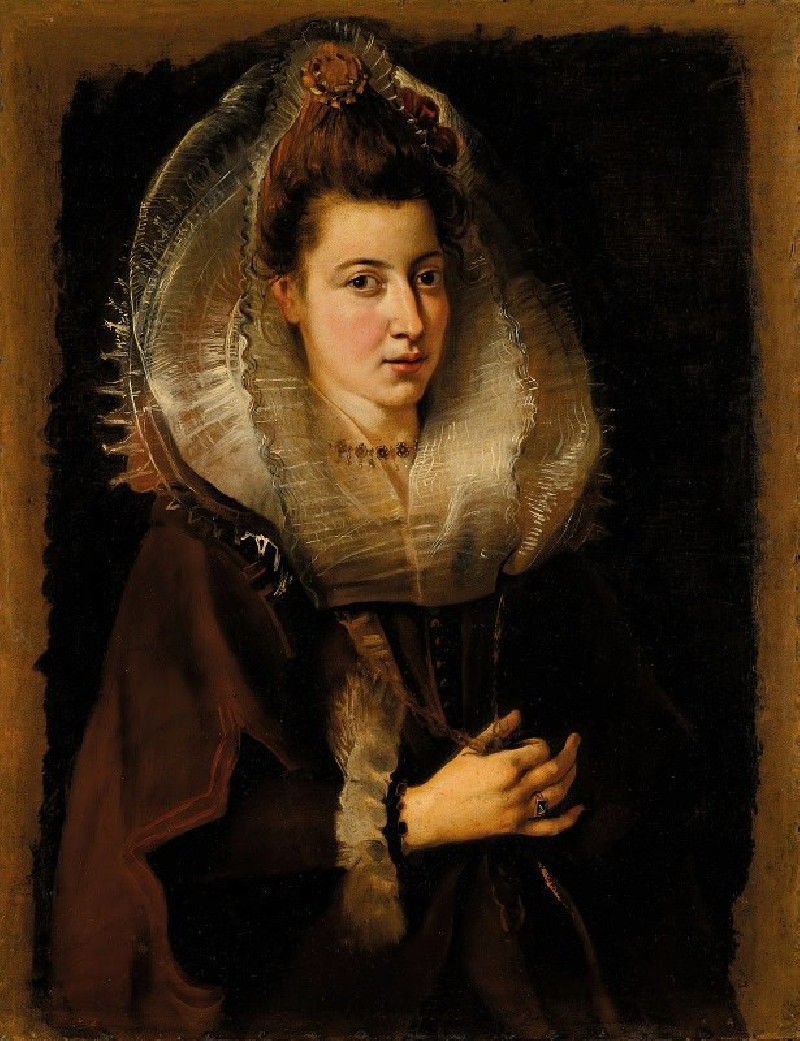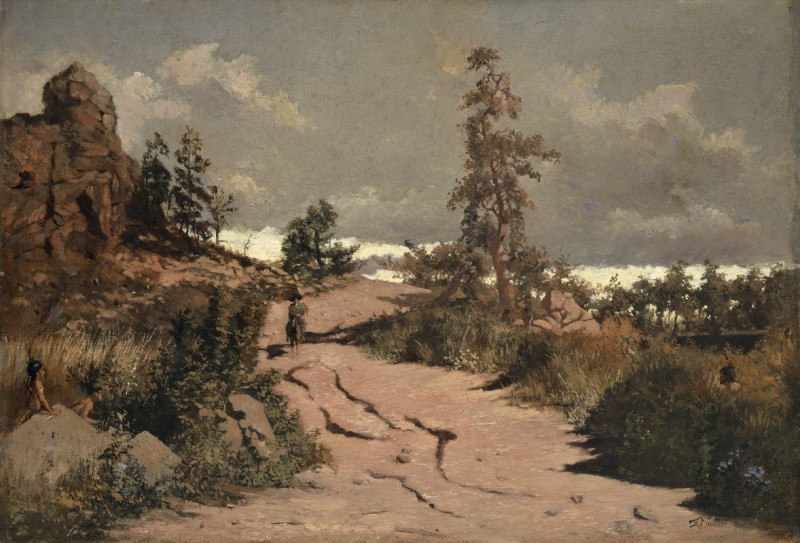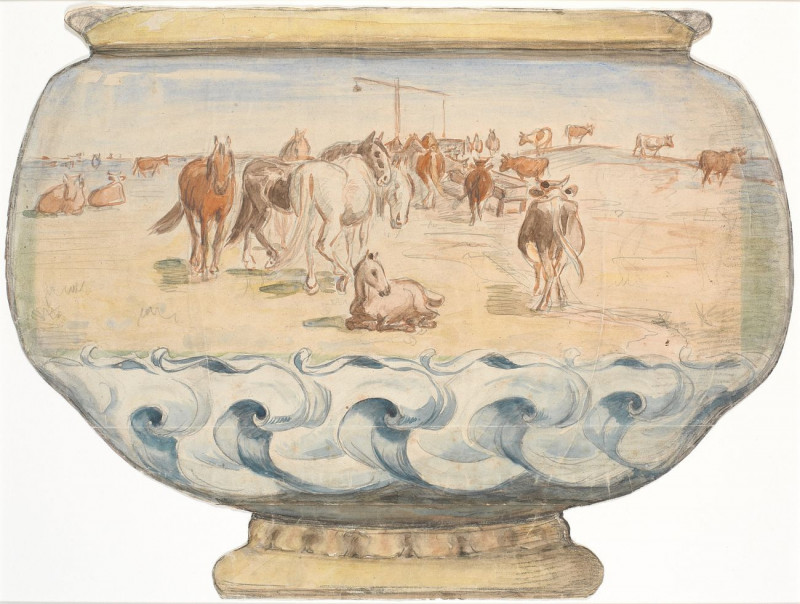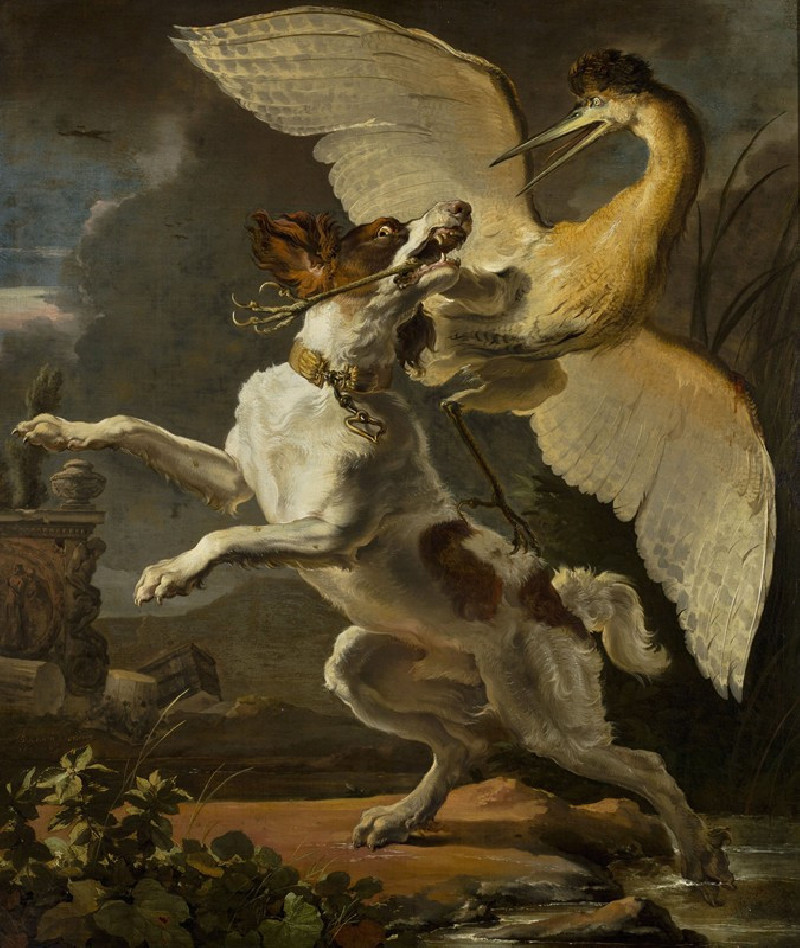Les Oies À Saint-Mammès (circa 1885)
Technique: Giclée quality print
Recommended by our customers
More about this artwork
In the tranquil landscape of "Les Oies à Saint-Mammès", painted circa 1885, Alfred Sisley captures the serene essence of a sunny day near the confluence of the Loing and Seine rivers. This exceptional work typifies the Impressionist movement's devotion to light, color, and everyday scenes.Greeting the viewer is a picturesque scene where nature coexists harmoniously with human life. The foreground of the painting showcases a lively group of geese gathered by the water's edge, their white feathers vivid against the shimmering blue water. A figure, possibly a shepherd, stands to the left, observing the peaceful congregation of birds and their interactions.Beyond the geese, one's gaze drifts towards a boat gently bobbing on the reflective water, hinting at moments of leisurely travel or simple fishing tasks. The background is adorned with lush trees and quaint village houses bathed in sunlight, their hues mingling softly with the expansive sky, which Sisley has rendered with broad, sweeping strokes of blue and white.Sisley's mastery in depicting light and shadow brings dynamic life to this composition, effectively conveying the warmth of the sun and the soothing coolness of the water. The choice of loose, fluid brushstrokes instills a sense of movement within the scene, as if a gentle breeze might at any moment ripple through the canvas."Les Oies à Saint-Mammès" not only reflects Sisley’s artistic prowess but also serves as a contemplative escape into the idyllic settings found at the edges of Parisian life in the late 19th century.
Delivery
Returns
Alfred Sisley (1839–1899), an English impressionist artist, was renowned for his breathtaking impressionist landscape paintings. Born in 1839 to a wealthy family in Paris, Sisley spent most of his life in France. Despite being intended for a career in commerce, he rebelled and pursued his passion for painting as an amateur in the studio of Charles Gleyre, where he befriended artists Claude Monet and Pierre-Auguste Renoir. The financial loss of his family in the Franco-German War led Sisley to make a career out of his art, though it left him financially distressed. It wasn't until after his passing in 1899 that the true value of his work was recognized.

